The Swamp Ghost
It had spent many years sitting in the middle of the jungle of Papua New Guinea. Locals referred to it as the Swamp Ghost, and no one knew where it came from or how it had gotten there. No one ever questioned it either.
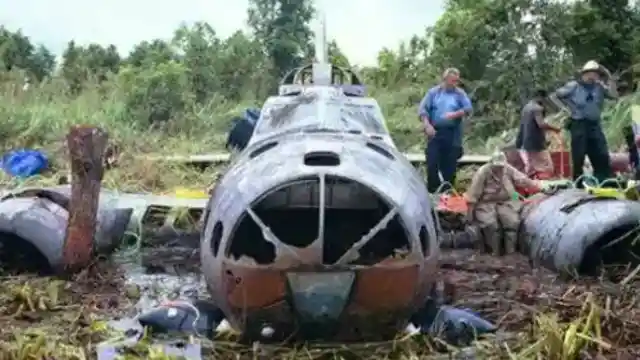
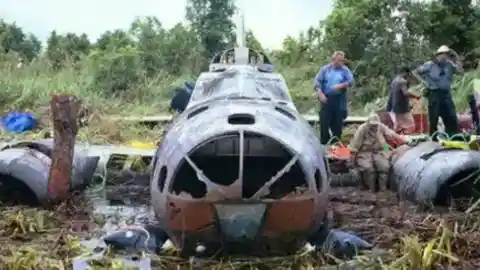
Not many people knew about it, and it didn’t gain much attention at first. Only a few locals knew of its existence. They came and went without ever giving it too much thought.
A Trained Eye
A trained eye would take one look at the Swamp Ghost and easily identify it as an object of high value. But this value was not only monetarily, but also historically.
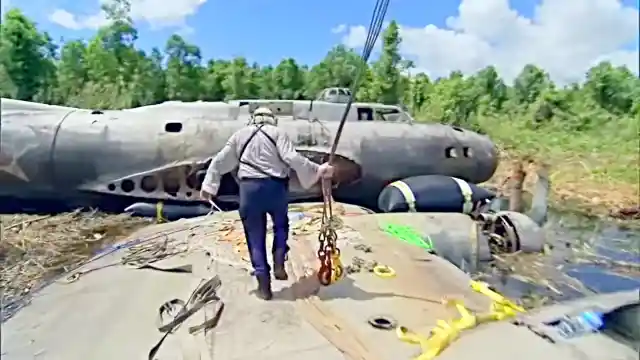
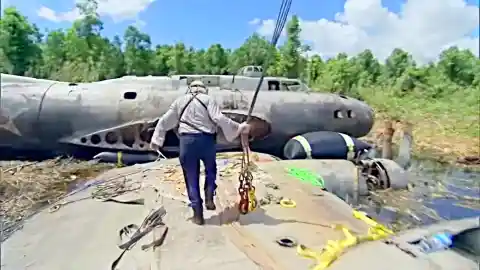
But despite this, its appeal with the locals made it hard for anyone else to even attempt to explore the mysterious object, not to mention, it would be nearly impossible to have it removed from the site.
Tough Terrian
But there was another issue. Due to Papua New Guinea’s tough terrain, a lot of the sites were located in areas that were almost impossible to reach. It’s hard to believe, but this beautiful country is full of dangerous and impassible obstacles.
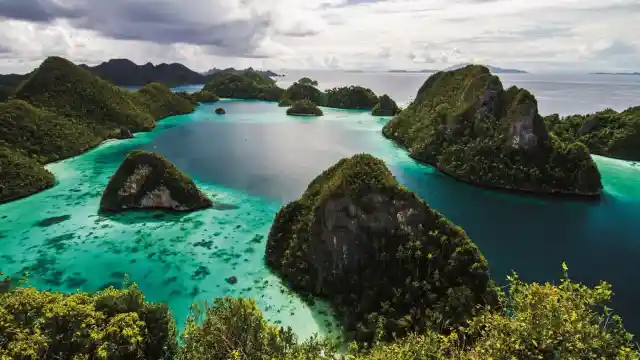
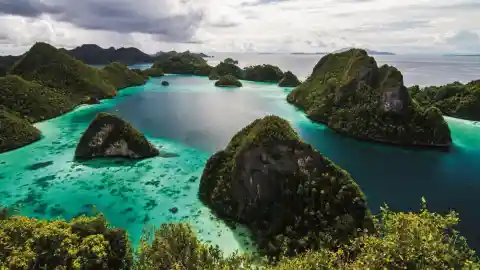
This includes tropical rainforests, rugged mountain chains, savannas, and swamps. These terrains had a negative effect on the country’s population. Because of this, the wreck remained untouched for many years.
Isolated
The locals of Papua New Guinea always managed to live their lives in isolation from the rest of the world, but this all changed after foreigners arrived on their lush island. Shortly after this, WWII rolled around, and suddenly, they found themselves in the middle of the conflict.
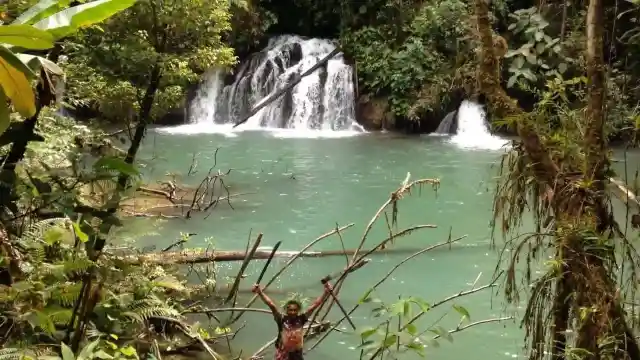
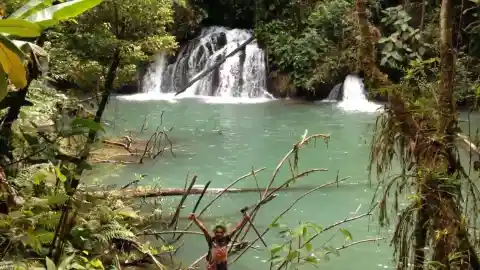
The Japanese invaded the Northern Coast, and because of this, the American troops chose Papua New Guinea.
Their Duties
Although the Papuans didn’t really fight in the war, they helped the soldiers who were on their soil achieve their goals and bury their secrets. Their main duty was to assist in the war effort by acting as service bearers.
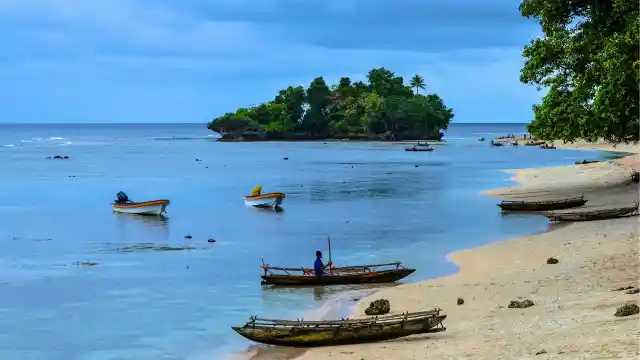
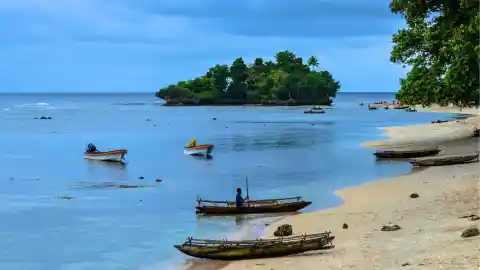
The Papuans usually carried supplies and wounded soldiers across their rocky mountainous terrain and dangerous jungles.
Visitors
During WWII, the country soon became a graveyard, and once the war was over, it became a memorial for the war. It became so popular that visitors from all around the world started flooding Papua New Guinea, desperate to get a glimpse of the history it housed.


But at the time, these visitors had no idea that there was something buried within the jungle that was shrouded with superstition and mystery.
Negative Impact
One challenge that the Americans often faced was that the area was filled with physical boundaries. But the country’s topography didn’t only impact the Americans negatively, there was a lot more to it.
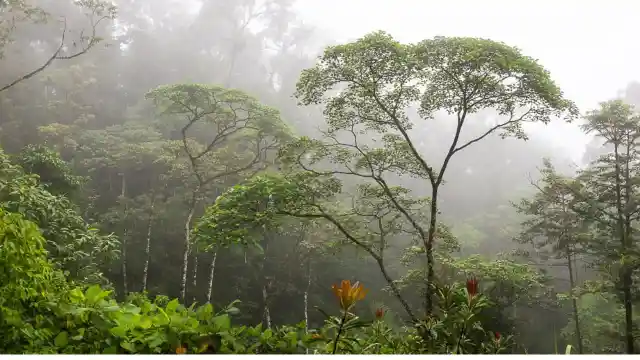
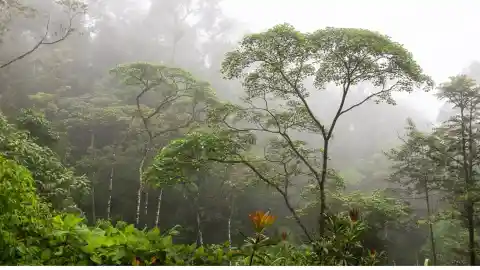
It also had a massive effect on the local population. It made it nearly impossible for there to be a singular national identity because of the massive separation between the locals.
Came To Terms
Natives in Papua New Guinea were forced to come to terms with their surroundings, and because of this, they came up with methods to deal with the obstacle they had to face on a daily basis. This also helped the Americans navigate the country.


But the locals still had access to things that no one else would be able to reach.
Unity
The majority of the natives lived in very remote and isolated arrears, which meant that there was little to no unity among the people.


It was the norm for them to stay loyal to their local clans, They lived a simplistic lifestyle, surviving by hunting wildlife and growing their own crops such as pawpaw, yams, and other foods native to the area.
They Found Things
After decades of living like this, they were used to going through the rough terrain, searching for food. They didn’t realize that this would come in handy, especially for the outsiders who temporarily came to the island and made it their home.
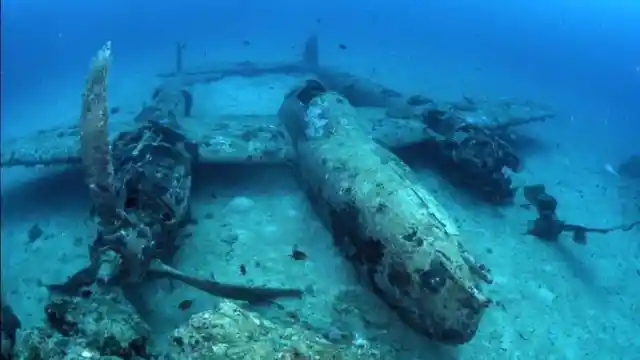
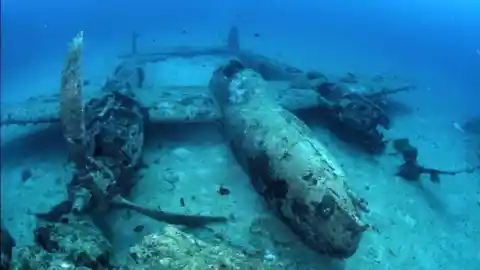
But this also meant that natives had seen and found things that no one else had any way of knowing of.
The Wreckages They Left Behind
Since Papua New Guinea was such an important strategic territory in the South West Pacific theater during the Second World War the country is littered with relics from that time.
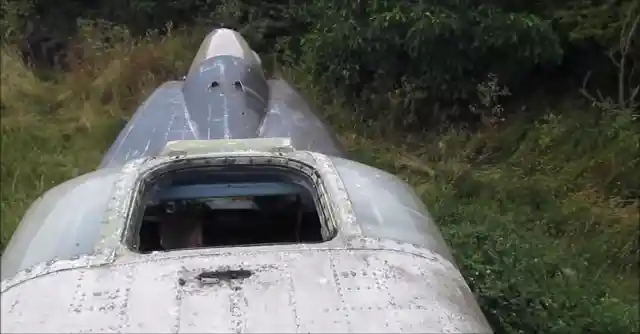
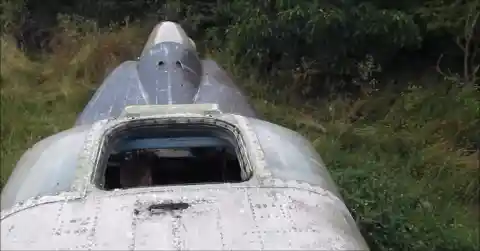
It’s estimated that over 600 US planes crashed over the country. And if we count in the losses suffered by the allied and enemy forces the figures would go into the thousands. However, there was one wreck that stood out above the rest.
Early Sightings
One of the early sightings of the Swamp Ghost was in 1972 when the Royal Australian Air Force conducted a routine flight across the Papua New Guinea jungle. They weren’t trying to find anything in particular and were just going through the motions.
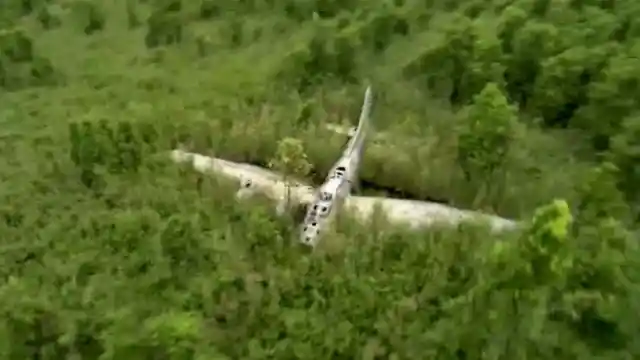
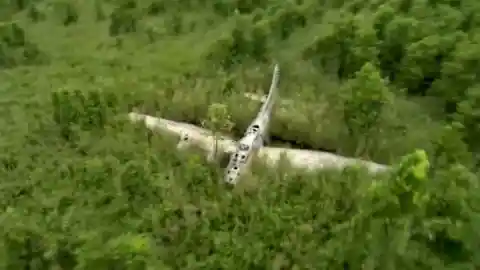
At first, everything was normal, and the pilots were happily chatting about random things. However, something in the thick of greens stood out and caught their attention.
What Was It?
For miles, all they could see were stretches of green, but the scene changed abruptly when something white seemed to call out to them from the middle of all the thick trees. It bore an odd shape, but they couldn’t make out what it was from their altitude.
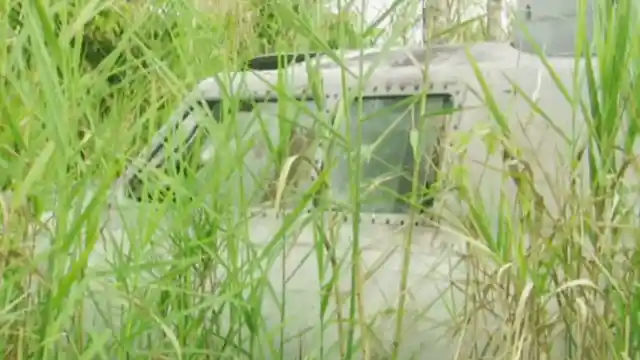
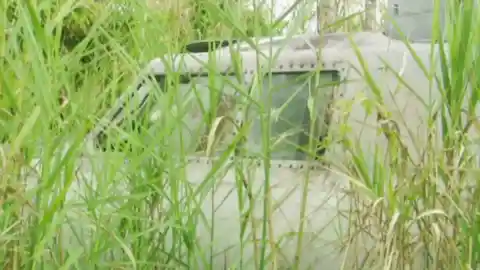
They could have just left it alone, but curiosity got the better of them.
Going Public
The pilots went public with their findings and as the news spread across the globe it got the attention of two scientists.
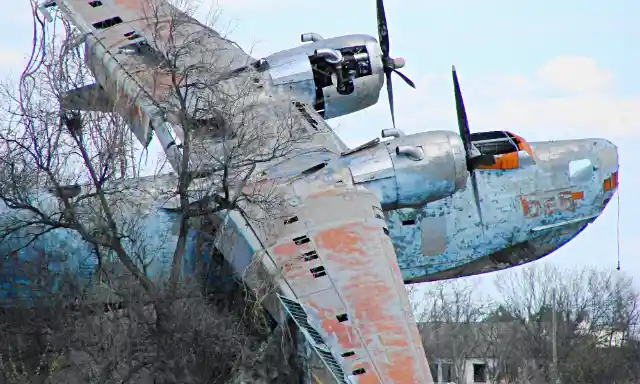
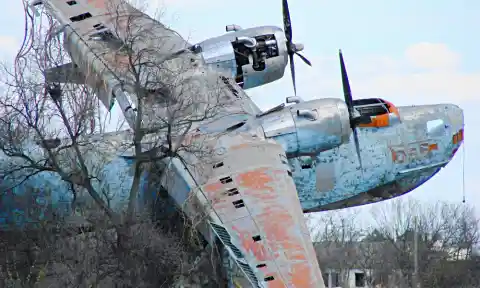
The object had been sitting in the swamp for decades and nobody knew what its origins were, which intrigued both Fred Hagen and David Tallichet. The story of the legendary Swamp Ghost quickly had them planning an expedition.
Fred Hagen
Fred was an archeologist by profession. He was the type who was always searching for the next rare find he could put his hands on.


So it was easy to understand why he wanted to be one of the first to get his hands on this mysterious plane that was hidden in the depths of the swamps. But things would not be as easy as he expected them to be.
Years Of Experience
Fred might’ve had years of experience thanks to his profession but getting to this particular treasure was no easy feat, even by local standards. It was the kind of expedition that would require a lot of hard work and determination.
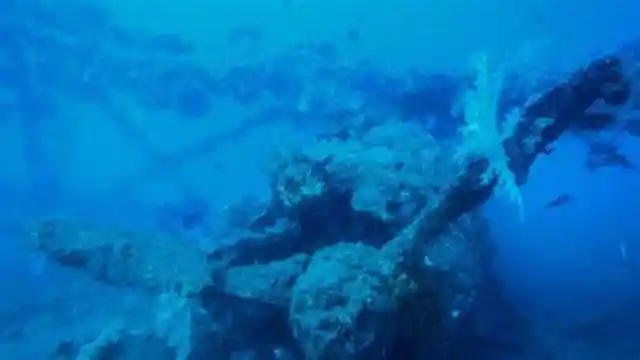
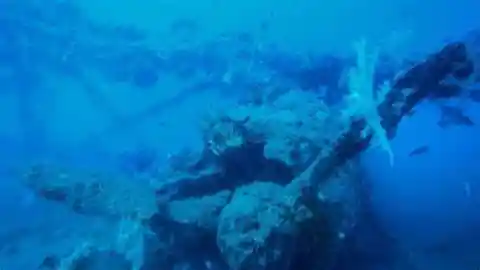
But that wasn’t going to stop the archeologist from achieving his goal.
David Tallichet
The other man who wanted to uncover the mystery was David Tallichet. David was a World War 2 veteran who had a passion for planes.
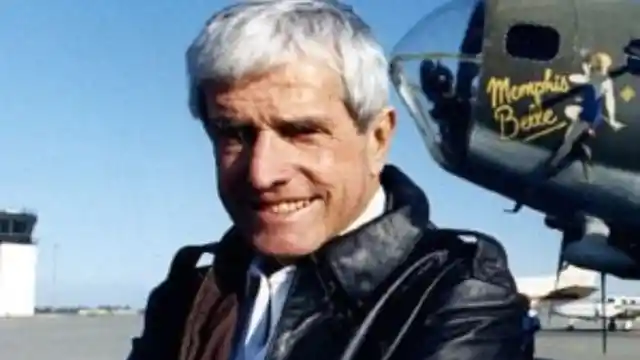
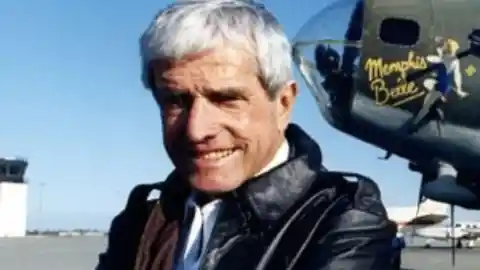
He made a business of collecting and restoring military aircraft. It’s easy to understand why a man who was so passionate about his work wanted to get his hands on a plane that had been hidden for such a long time.
Life-Long Hobby
By that point in David’s life he was the proud owner of over 120 planes. His collection included a wide range of aircraft, such as a B-25 Mitchell bomber and a P-40 Tomahawk.
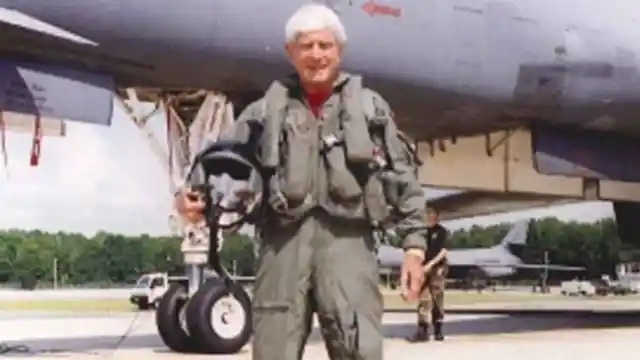
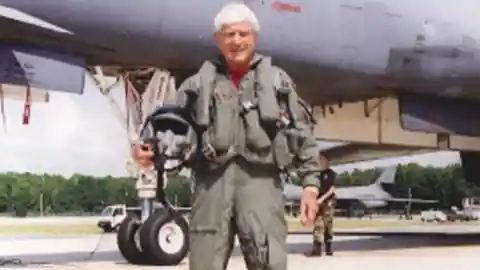
He was thrilled to add another plane to his list of salvaged military aircraft. But he still didn’t know exactly what type of plane was stuck in the swamp.
A Plan Of Action
So the two of them joined forces and arranged an expedition into the vast jungles of Papua New Guinea. Knowing it wouldn’t be easy, they got in touch with some of the locals in order to get help for their journey.
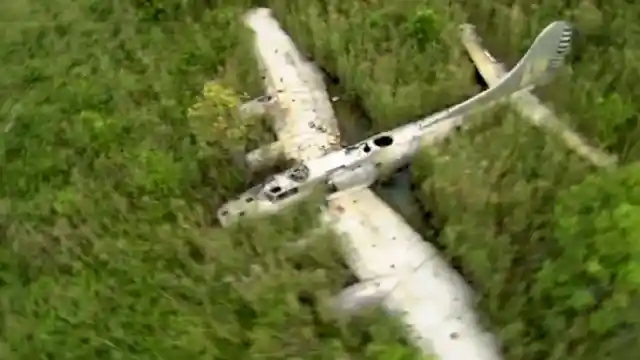
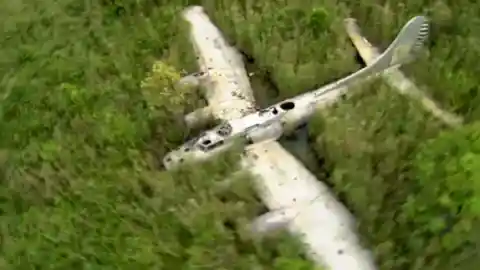
What they didn’t expect to hear were the warnings the locals had to offer them. They quickly learned that there was more to the Swamp Ghost than met the eye.
Arriving
Once their crew and equipment were set. Frank and Dave arrived in Papua New Guinea. They met up with the locals they had contact with and uncovered the mystery that surrounded their prized find.
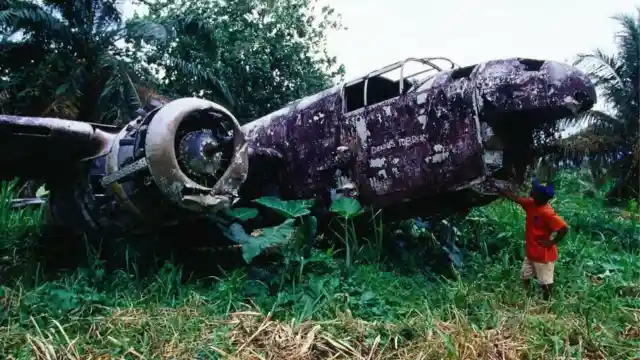
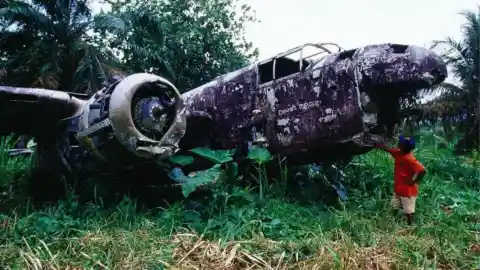
There were rumors of people who went out to find the Swamp Ghost and never reached their destination. The locals claimed that the swamp was cursed.
The Curse
The swamps were filled with ferocious creatures and the locals knew that, so that had nothing to do with their claims. No, they were speaking from what they saw. For decades, people from around the world flocked to witness the secret that had lain in the dense marshland.
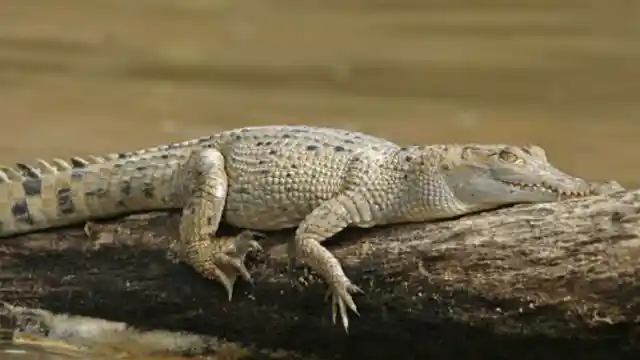
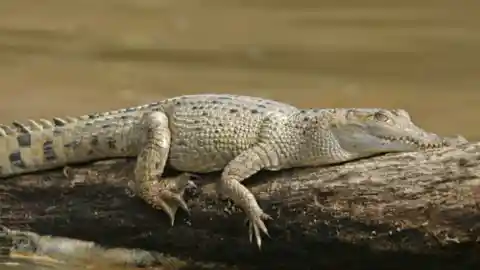
Many had fallen under the spell of the Swamp Ghost, but very few ever reached their destination. The treacherous marshes claimed some, and malaria drove the others mad.
History And Legend
The villagers know of the sunken freighters, submarines, and troopships that rested on the bottoms of their harbors and hidden bays.
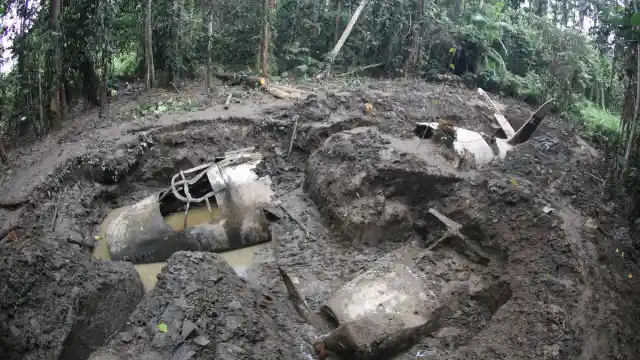
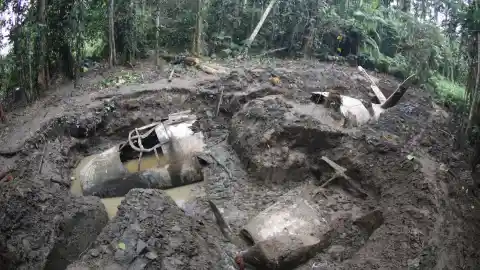
Eerily blackened hulls of bombed planes sat beside old airstrips. And the debris from hundreds of crashed planes lay camouflaged in the mountainous rainforests as well as the lowland jungles.
So Many Hidden Relics
They know the history because many of them were there when the crashes happened. Many perished, and many thousands of Japanese soldiers were never accounted for.
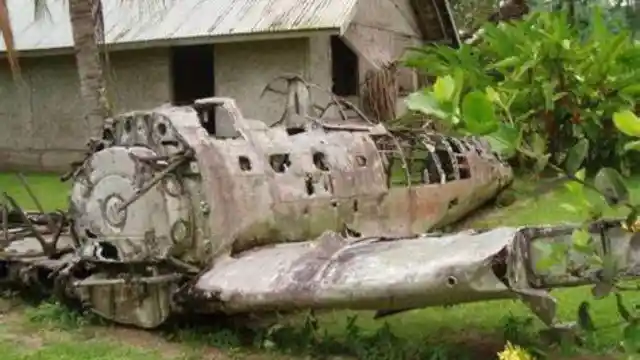
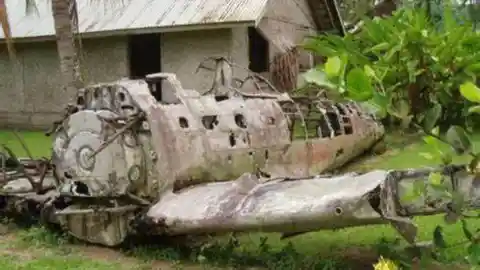
But even after so many years, the villagers still see pieces of the War that ended so long ago creeping to the surface, especially after heavy rains.
The Warnings
Even though the locals had delivered warnings, Dave and Fred were fascinated by it all. They decided not to heed the warnings and to proceed with their plan.
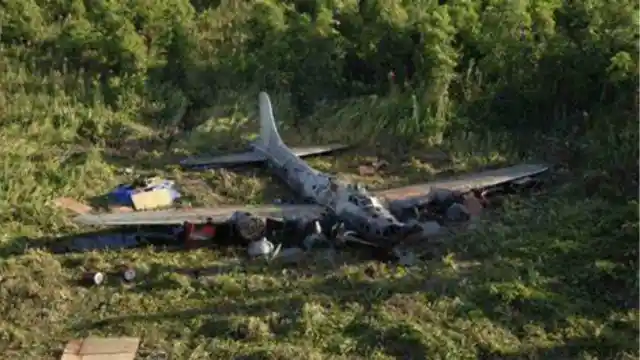
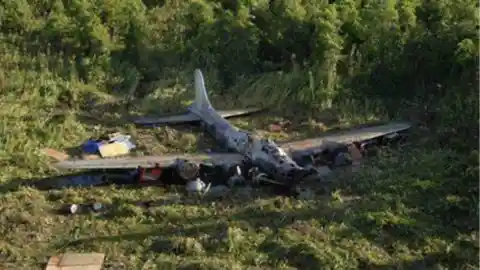
Deep down they were itching to see the area with their own eyes. To stumble upon all the pieces of history they had heard about.
Pushing Forward
They weren’t familiar with the terrain and certainly didn’t know what the swampy marshes held in store for them.
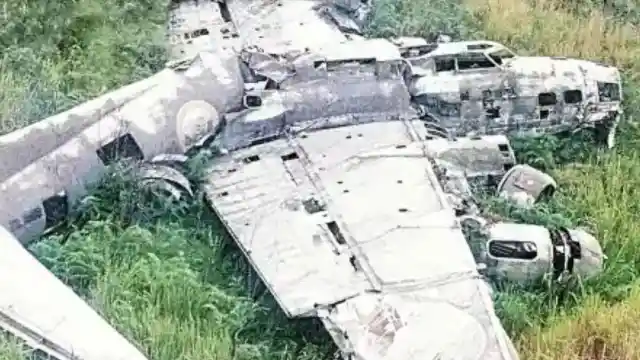
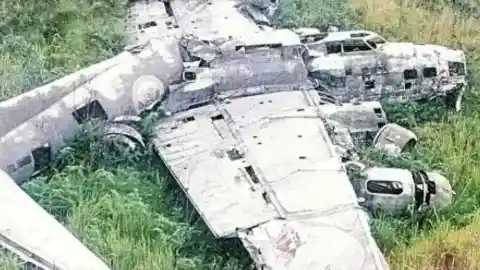
However, the passion for exploring something that had apparently been untouched for decades overpowered the uncertainty. But there were more tangible dangers ahead than the ghosts that were said to wander the marshes…
Into The Heart Of The Jungle
“Don’t mind the danger,” they thought. “This thing needs to be seen and understood — and it is us who will be getting it done.”
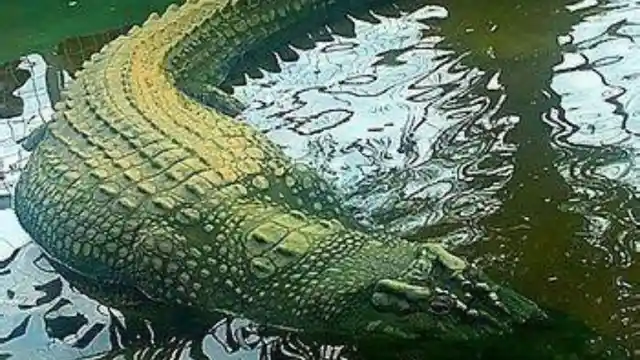
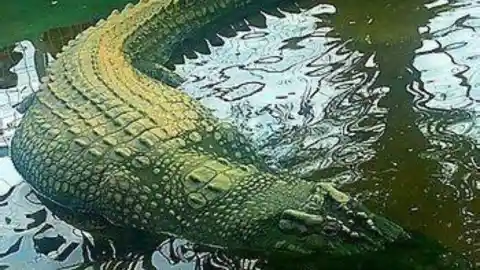
Of course, it was easy to be headstrong and brave when you hadn’t been to such kinds of marshlands before. But there we many trails standing between them and their goal.
Ignoring The Danger
Perhaps these risks and obstacles were why the object had remained unexplored for so many decades.


But Fred, David, and their team were determined to journey through the unforgiving landscape to see it up close. They were also willing to face any danger that might lie in wait for their arrival.
The Journey
The mysterious object was challenging to get to as it lay deep within the swampy area of the Papua New Guinea jungle. Needless to say, reaching it on foot was no easy task. The water came up to their waists, and it was difficult to move because of the thick mud.
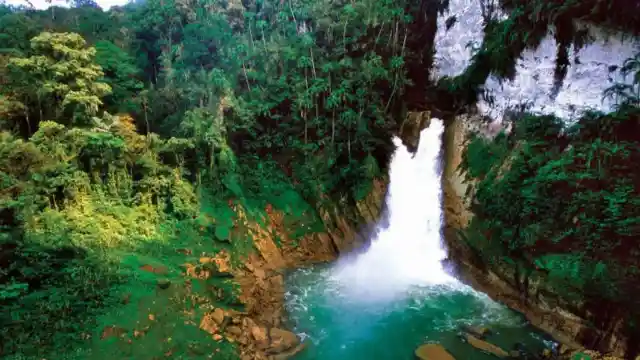
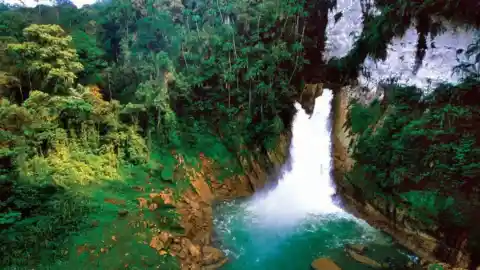
Virgin swamps like this one were also home to crocodiles and other dangerous creatures, so very few ever dared to enter the area.
War Enthusiasts
Every year, war enthusiasts flocked to the country to see the wreckages that lay strewn over many parts of the islands for themselves. Because of its strategic location, Papua New Guinea became the site of many clashes between the Australians, Japanese, and Americans, all of which had set up military bases in different areas.
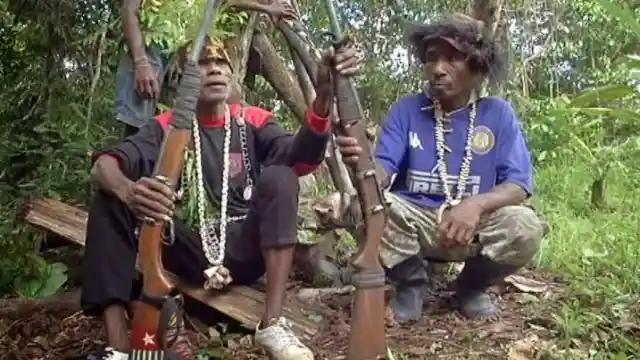
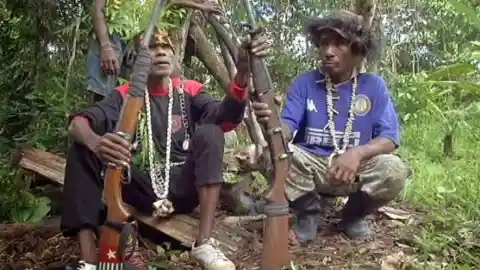
But Fred Hagen and David Tallichet were about to make the discovery of a lifetime.
The Discovery
When they finally stepped foot in the jungle, they felt their hearts begin to race. They had finally reached the site. It took them hours and with each step, their excitement grew.
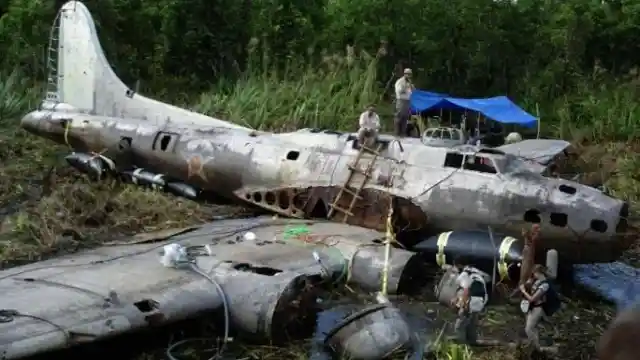
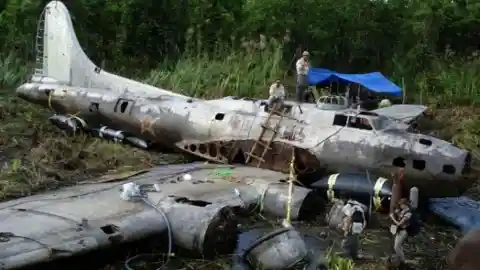
But as they laid their eyes on the object they were seeking there was a moment of silence within the team. Everybody just stood there, awestruck by what they saw.
What The Swamp Had Been Hiding
What the swamp had been hiding for so many years was a massive airplane. Locals had been calling it the Swamp Ghost because it was well hidden deep within the jungle. Others had the belief that it was haunted.
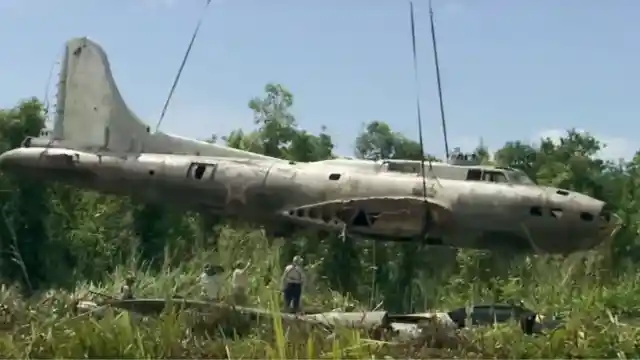
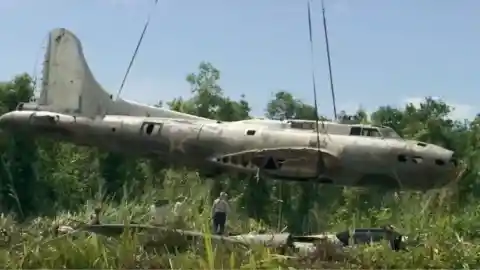
Why was there a massive plane in the middle of the jungle? What happened to it? And why hasn’t it been explored? The team was about to find out.
Face-To-Face With The Swamp Ghost
Had they been among the tribe of villagers, they would’ve left the plane untouched. But their team was so bent on finding out more about its mysterious origins that they didn’t even wait a couple of minutes before one of them stepped up to it.
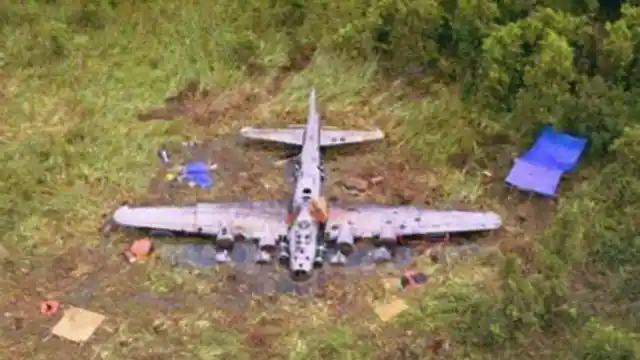
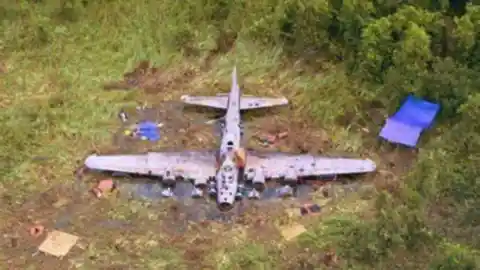
They wanted to explore it and learn more about how it ended up where it was.
What Could It Tell them?
The team discovered that it was indeed a plane from World War 2. They could tell from the structure.
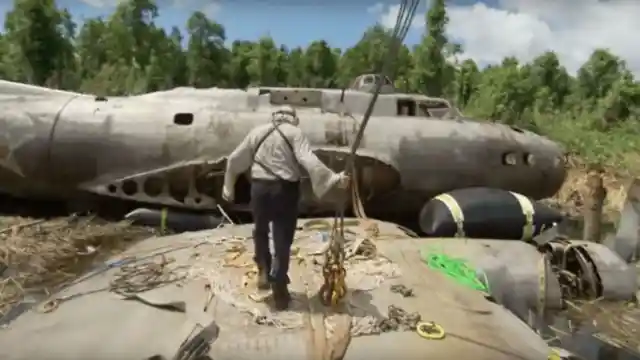
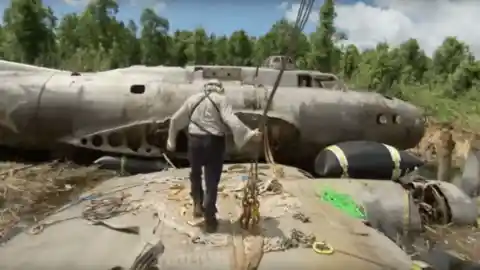
It didn’t come as a surprise since Papua New Guinea was a war hotbed and major conflict zone. But there was something incredible about it and that was that it seemed to have remained intact.
Salvage
The plane’s location was probably the major reason why it remained unexplored. The deep swamplands would also make it almost impossible for anyone to remove it from the site for further study.
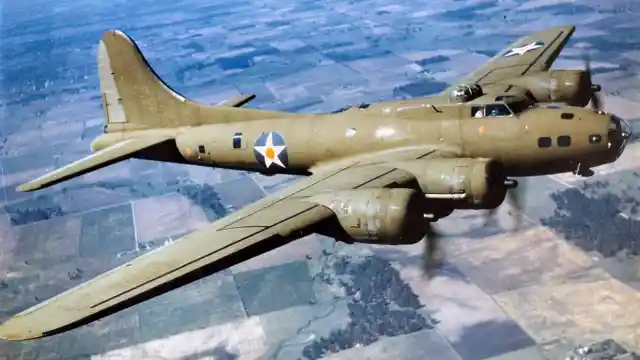
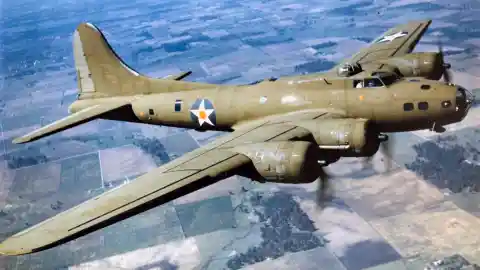
But that didn’t deter the two men from finding a way to salvage the plane and, hopefully, be able to do what they do best — restore it to its former glory.
Not Deterred
Upon further inspection of the aircraft, the crew discovered that the plane which was stuck in the swamp of Papua New Guinea was the same type of plane that Taliichet himself had piloted during the Second World War. It was a B-17E Flying Fortress.
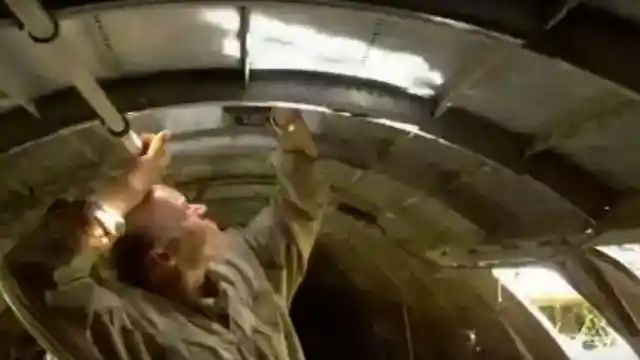
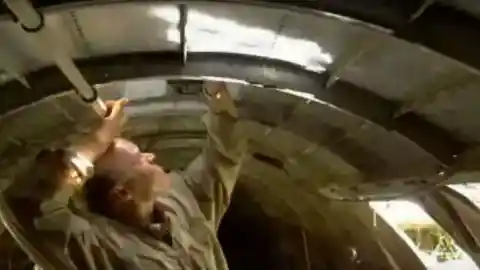
That rose David’s excitement even more. But they still had to get it out of there before he could start patching it up.
A Long Wait
With that in mind, both Hagen and Tallichet went to work on salvaging the plane known as the “Swamp Ghost.” They started their endeavor in the 1980s, but it would take them decades to complete the extremely difficult task.


Even though it was deemed impossible to salvage the plane, the two kept at it and weren’t going to be deterred by anything.
Greatest Dream
According to Hagen, the restoration of the plane was their greatest dream. “Because, for some reason, it captured the imagination of people from around the world…” he told South California Public Radio.


Back when it was still in action the B-17E was appropriately nicknamed the Flying Fortress. But where did the nickname come from?
Fitting Nickname
According to local legend, the plane’s nickname was given to the aircraft after a Seattle Times journalist saw the plane during a test flight back in 1935 and remarked that it looked like a flying fortress.
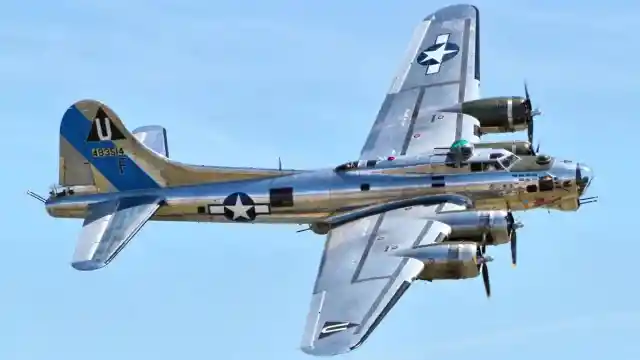
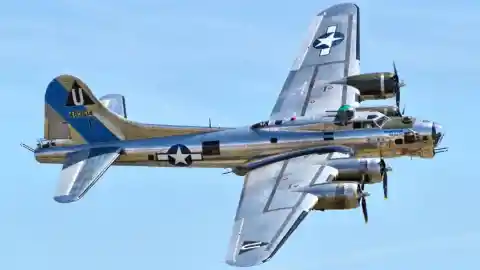
Even more amazing than the find and the restoration of the plane is its backstory, and its of becoming half-submerged in the far-off swamp.
The Japanese Attack
Just one day before the Japanese attacked Pearl Harbor on December 7, 1941, the Swamp Ghost was sent out on a special mission.
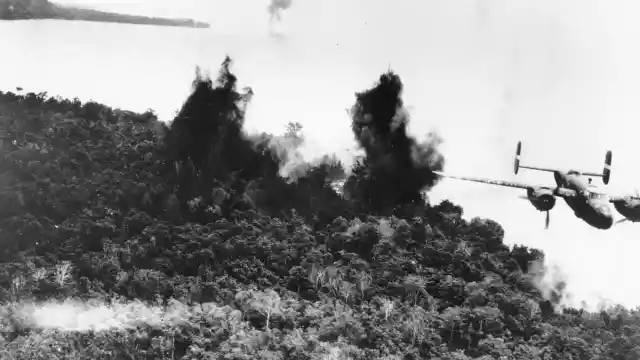
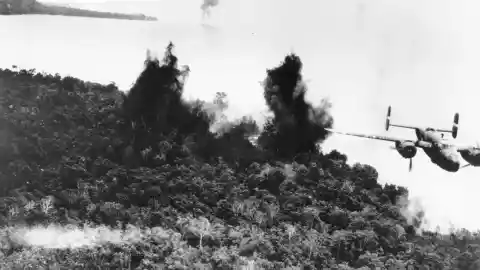
Instead of flying with the Kangaroo Squadron that day, it was sent on one of the earliest bombing missions of the Second World War. It was a beast in the sky and completed its mission as ordered.
Disaster Struck
Then, just a few short months later, disaster struck. The Japanese invaded the township of Rabaul on the island of New Britain in Papua New Guinea.
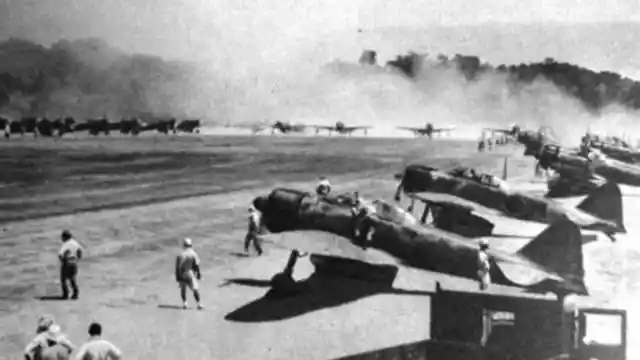
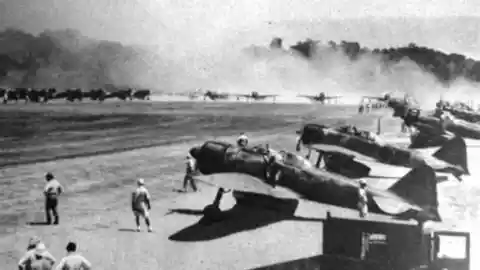
The invasion was a threat to all allied troops stationed in the country, and something had to be done to ensure their safety. But it would be a disaster for the Swamp Ghost.
The Downfall
The dreadful day occurred in February of 1942. The crew of the Swamp Ghost was dispatched to attack Japanese ships in Rabaul Harbor on New Britain Island. But the majestic Swamp Ghost would never return from its mission.
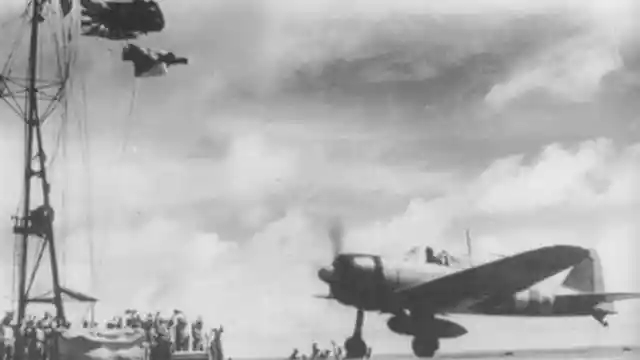
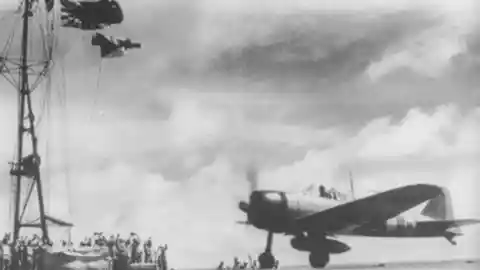
After the crew set out things started going terribly wrong. Nobody predicted that it would end up where it was found.
First Problem
The plane started experiencing problems when the bomb bay doors wouldn’t open. They had to make a second pass at their target before finally getting them open.
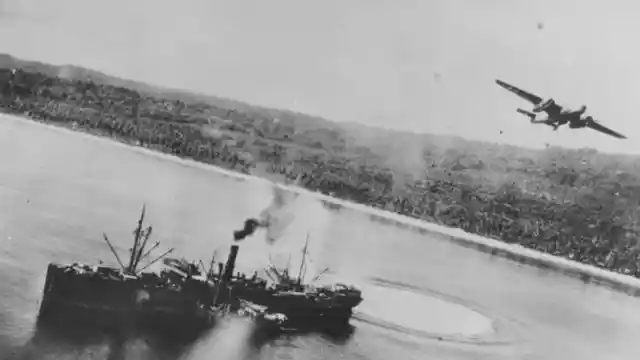
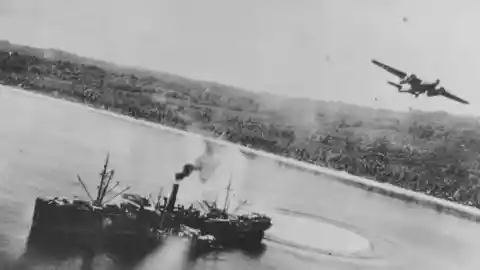
But by that time, they had already been struck with anti-aircraft ammunition from the Japanese troops. Something that would bring about the downfall of the Swamp Ghost.
Technical Malfunction
A dogfight ensued after the Swamp Ghost made its second pass on its target. Luckily they were successful on that attempt as they were finally able to get the bomb bay open, giving the enemy less time to launch a counterattack.
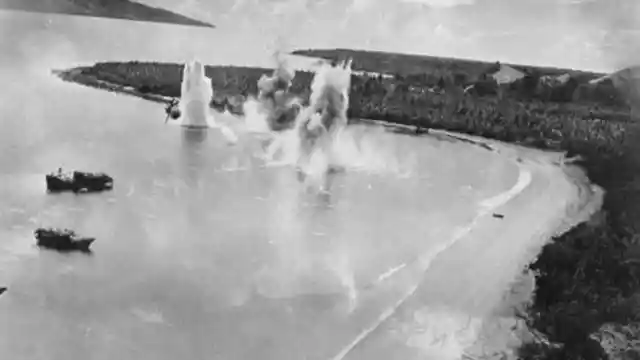
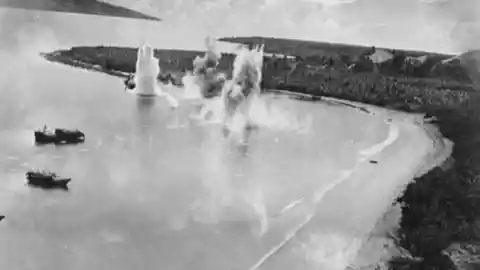
The Swamp Ghost managed to take down three enemy fighters out of a dozen.
Forced Into A Tough Choice
Then, disaster struck. An enemy anti-aircraft flak hit the Swamp Ghost. Thankfully the plane didn’t explode, but one of its wings was severely damaged.
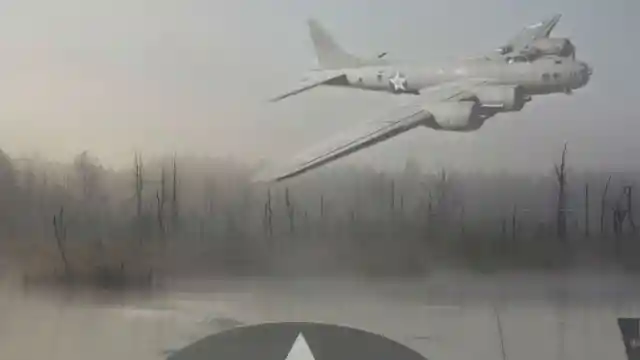
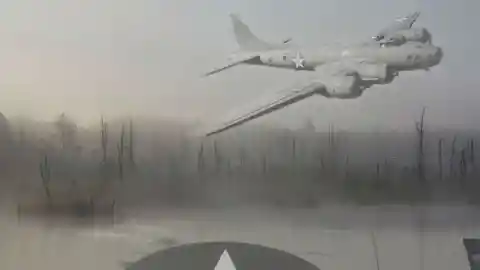
The plane started leaking fuel and the pilots knew they had to move in for a crash landing in the New Guinean wilderness, unable to reach its destination.
Crash Landing
The Swamp Ghost was due to return to the New Guinean capital city of Port Moresby, but there was no way the crew could make it there with a broken wing and a minimal amount of fuel.
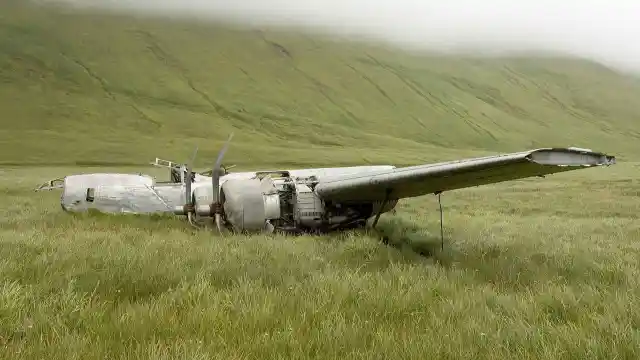
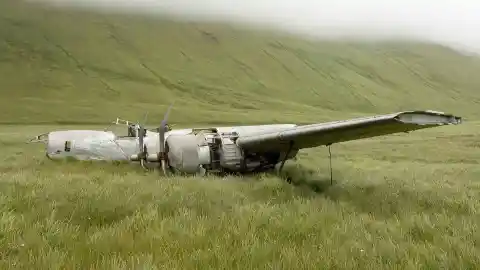
But then the pilot spotted a perfect place to make a crash landing.
Supposed Soft Spot
Coming up on the Own Stanley Mountains, the pilot spotted a soft wheat field which he believed would be a perfect place for a crash landing.
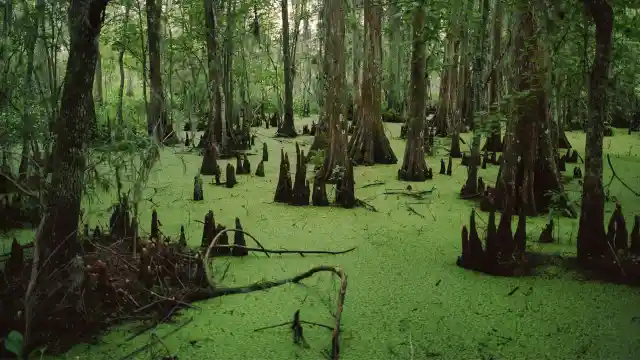
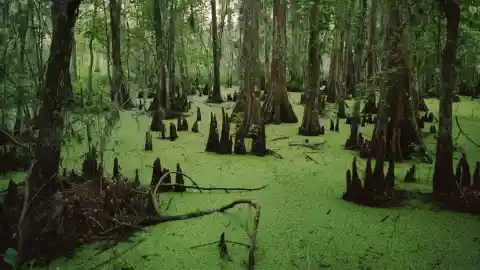
Unfortunately, not everything was as it appeared to be. What the pilot had initially thought was a large wheat field ended up being something far more treacherous.
The Middle Of Nowhere
The pilot landed in what ended up being a swamp. And that particular swamp was inhabited by deadly, ferocious crocodiles who wouldn’t think twice about making the crew their next meal.
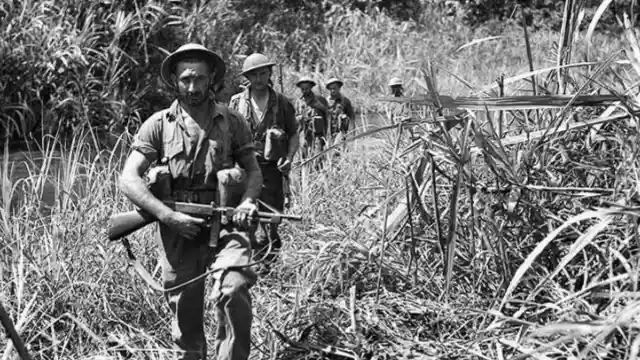
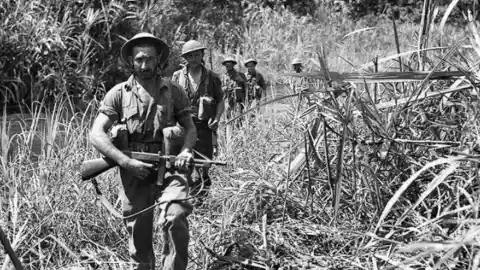
The Swamp Ghost made its crash landing in the swamp with a relatively soft landing. Miraculously none of the crew members were seriously injured.
Stranded
As good as that may have been, the plane’s crew was now stranded in a dangerous swamp that appeared to be in the middle of nowhere.
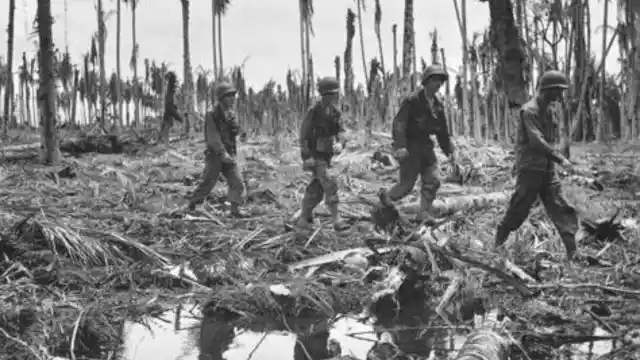
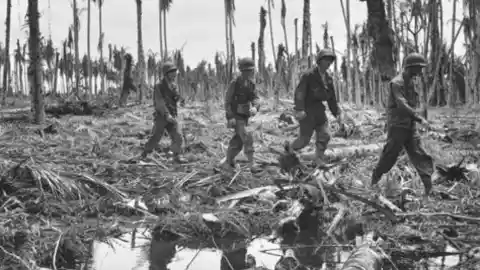
Not knowing where they were or in which direction they were supposed to be heading, they set off, hoping to find someone who could help them get back to their base in the capital.
Kind Locals
But unfortunately, the crew all got malaria while attempting to traverse the dangerous swamps. Luckily, they came across a native who assisted them and took them back to his village.
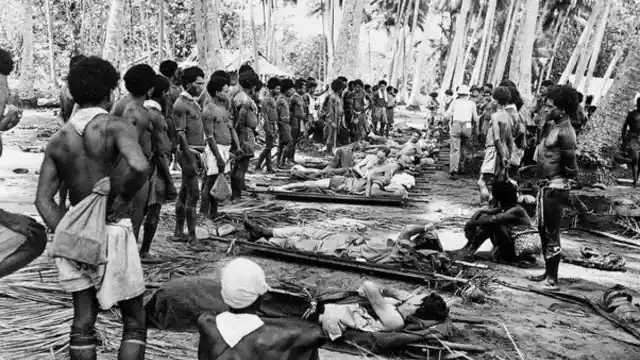
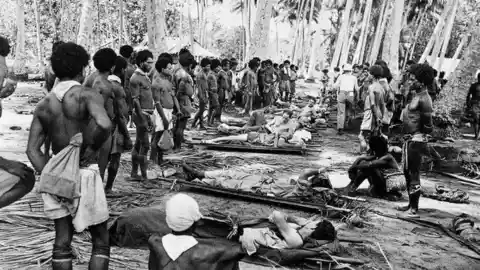
The kind local helped treat the crew and nurse them back to health. After that, they rejoined the rest of the troops in the capital.
Long Awaited Reunion
The crew of the Flying Fortress eventually returned to the US forces base in the New Guinean capital of Port Moresby.
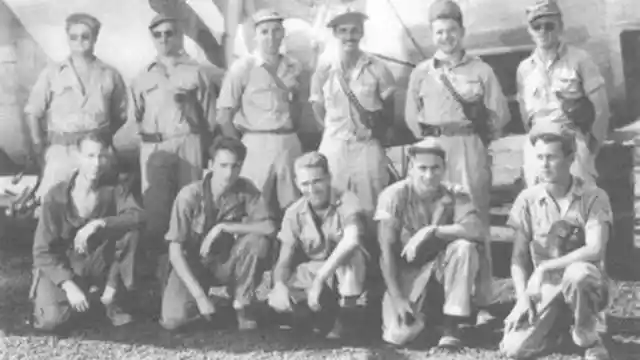
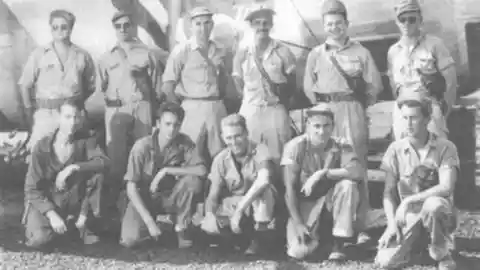
When they arrived they were welcomed back as heroes by their fellow troops, but their celebration didn’t last long. They were sent out on a new mission not long after their return.
Lost In Time
While the crew of the Swamp Ghost was redeployed on a new mission, their Flying Fortress was all but forgotten. As time went on and the war ended, no one thought twice about the Flying Fortress, and it was time to go home.
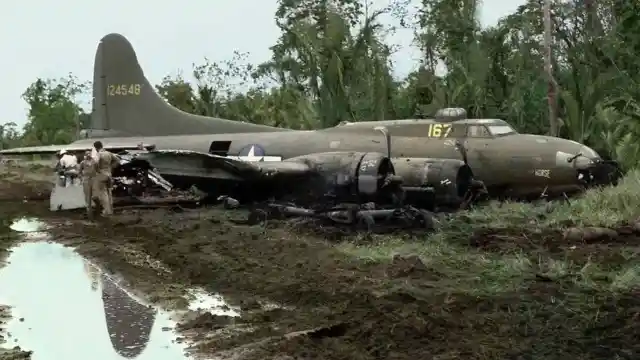
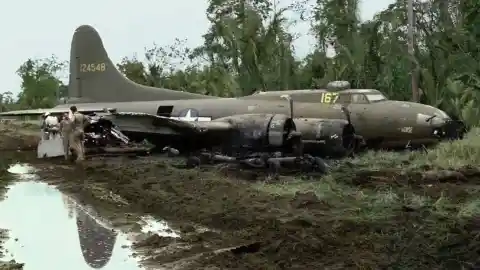
It seemed that the Swamp Ghost was all but forgotten in the swamp that would become it’s new home.
Laying In Waste
For decades the plane was known only to a few locals in nearby areas. US forces completely forgot about the plane, and no effort was made to recover it from the wreck site.
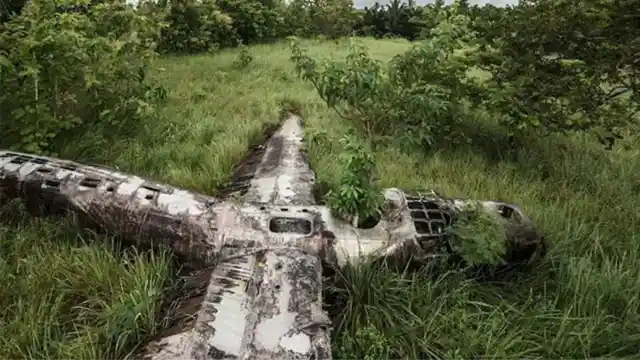
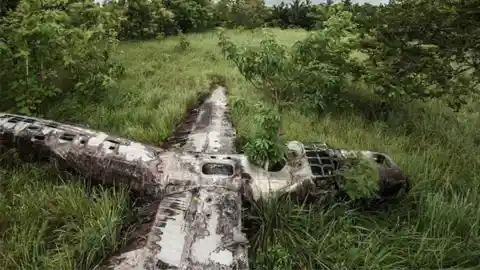
Then, in 1972 the plane was rediscovered by the Australian troops who were flying over the swamp. The news hit international media, and the Swamp Ghost rose to fame once more.
The Most Famous
When Hagen and Tellichet eventually got to the Swamp Ghost, they found that the aircraft was remarkably well preserved. Mainly because of it being partially submerged in water and because of the difficulty of getting to the location.
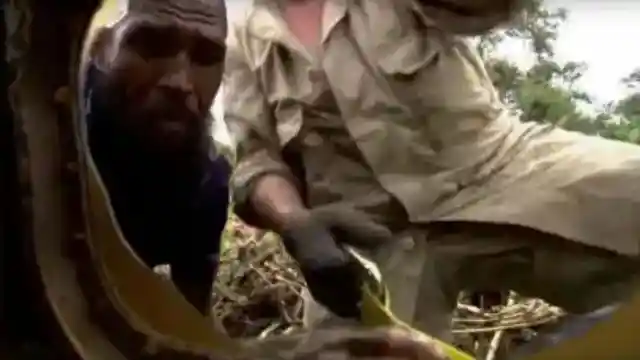
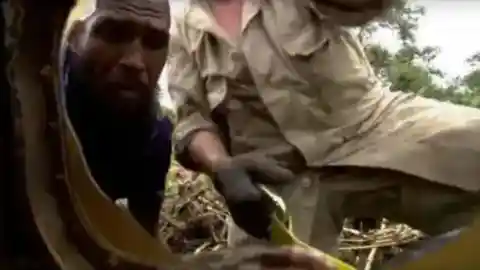
But that didn’t stop locals from ransacking the inside of the plane.
Nothing Of Value
All of the mechanics and weaponry inside of the aircraft had already been looted by the time Hagen and Tellichet arrived at the plane.
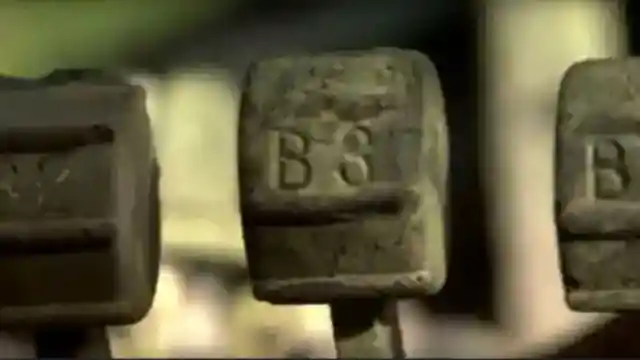
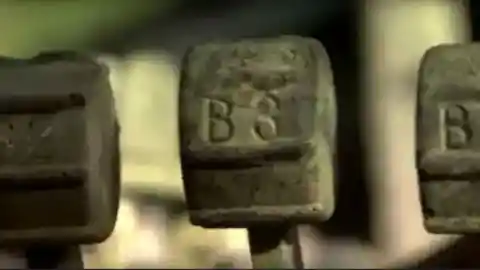
But still, the Flying Fortress is one of only four other planes of its kind, and of all the wrecks that took place over Papua New Guinea, the Swamp Ghost is the most famous of them all.
Rich In History
The Swamp Ghost sat abandoned and long forgotten about for 64 years. It was located in the Agaiambo Swamp, around eight miles inland from the northern Papua New Guinean coast.
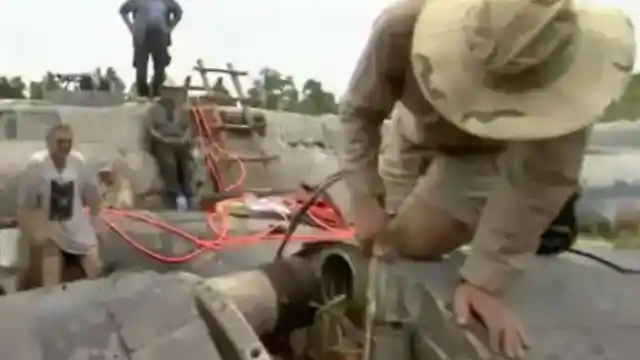
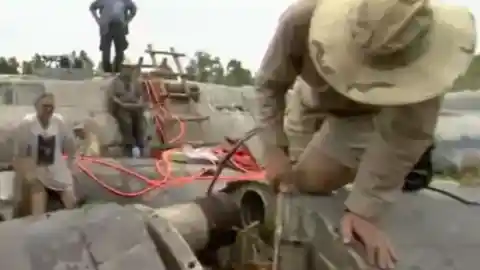
But what Hagen and Tellichet didn’t know was just how much the plane meant as far as history went. The Pacific Aviation Museum in Hawaii explained it best.
Battle Scars
The Flying Fortress is “arguably the world’s only intact and unretired World War II-era B-17E bomber. A one-of-a-kind example of an aircraft that played an indispensable role in winning WWII. And it is the only B-17 in the world that still bears its battle scars,” the institute stated.
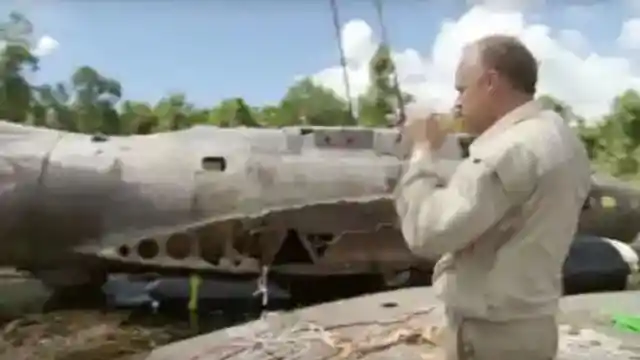
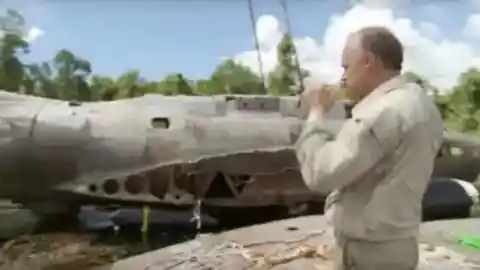
But this wasn’t all.
A World War II Favorite
Boeing started producing the B-17 heavy bomber back in the 1930s. Since its introduction in 1938, the B-17 was still the third-most massively produced bomber of all time.
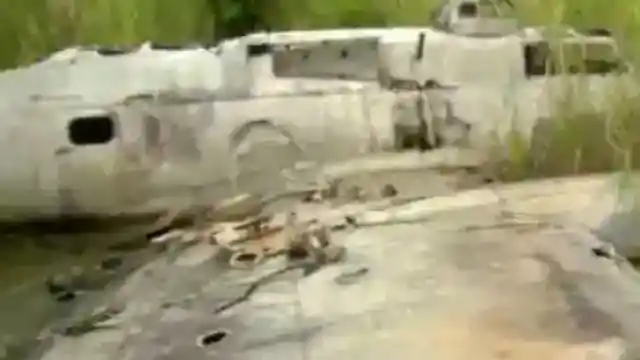
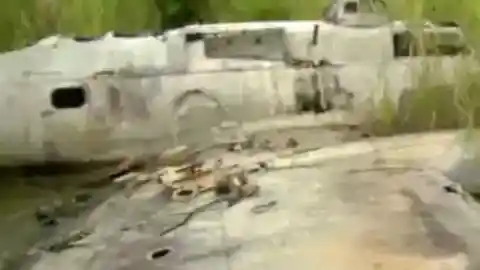
It was used heavily during the Second World War, mostly in Europe, against German forces. At least 12,731 aircraft were built.
Crucial Role
During the war in the Pacific, the B-17 bomber was used in raids against Japanese shipping and airfields. The planes were stationed in Hawaii, Panama, and Alaska.
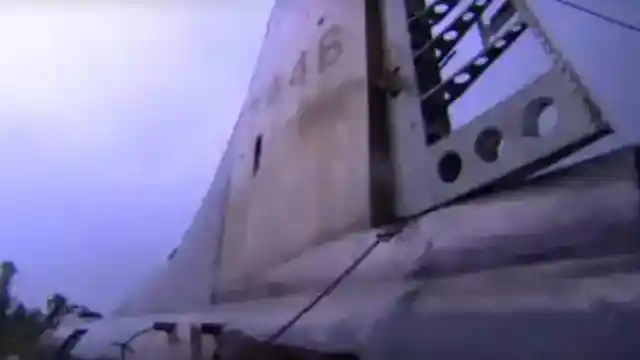
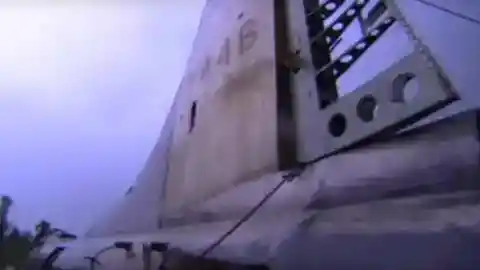
The bomber was a strategic resource in the war and was responsible for dropping 640,000 tons of bombs (out of 1.5 million total) on Nazi Germany. But what did any of this mean for Hagen and Tellichet?
A Vision Of Modernization
The B-17 bomber was part of President Roosevelt’s vision to modernize the US military. The B-17 was a new generation of bombers that could carry a much more sizable payload and serve remote bases around the world.
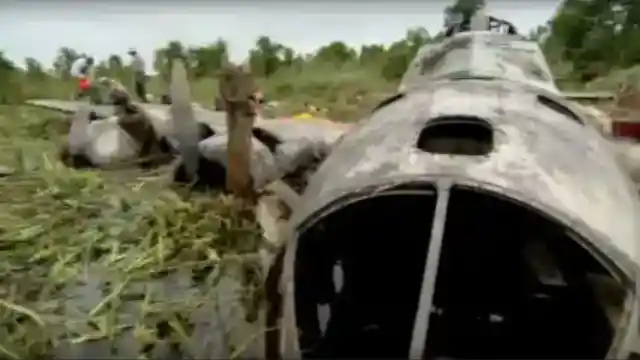
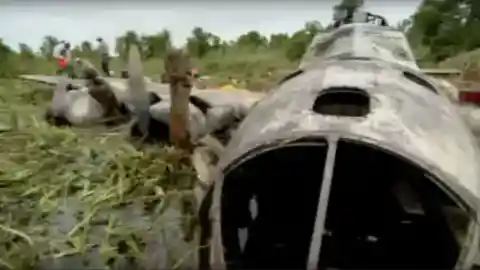
But Boeing didn’t just stop at the B-17; they continued to improve the engineering of the aircraft.
Being Phased Out
After the end of the war, the B-17 bomber was quickly phased out of use by the US Air Force.
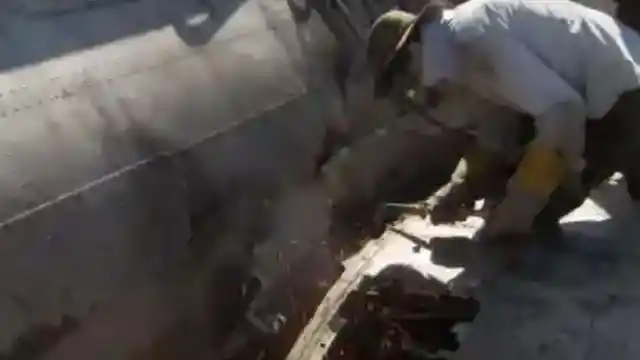
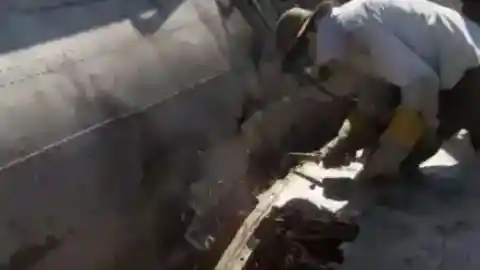
Most of the bombers were returned to the United States, where they were sold for scrap and melted down. Only a few bombers remained in use, mainly for secondary roles such as transport, air-sea rescue, and photo-reconnaissance.
The Fight Was Not Over
Hagen and Tellichet’s salvaging operation was finally completed in 2006. But they only received permission to return the aircraft to American soil four years later.
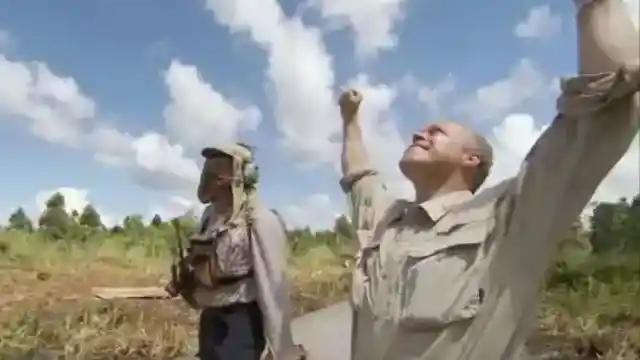

There we many obstacles in the way of their removal. One of the biggest issues they faced during their operation was convincing the locals to let them remove the B-17 bomber.
Holy Relics
To the local villagers, the bomber was a relic sitting on holy land. The villagers had to be persuaded to hand over the Swamp Ghost.


The locals even performed a ceremony to appease the spirits in the swamp. But not everyone was happy with the chief’s decision to let Hagen and Tellichet remove the relic.
Son Of A Local Chief
One man, who also happened to be the son of a local chief, set out to make sure that the B-17 bomber wasn’t removed.
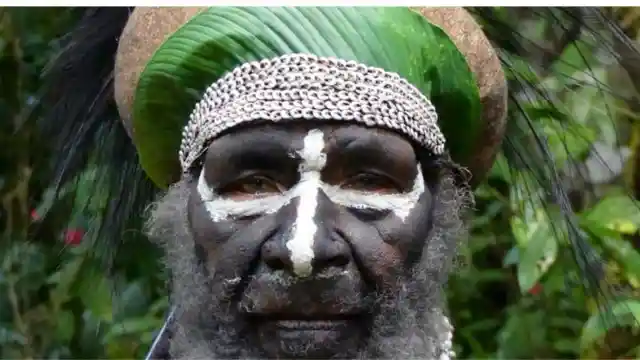
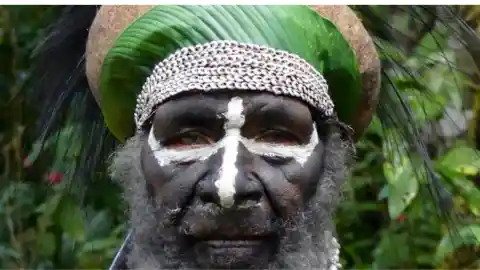
The man even went as far as to organize a group of people to help him intercept the plane before it could be moved to a barge offshore.
Couldn’t Stop Them
The efforts, however, were not effective. The bomber was lifted by a Russian-made military helicopter and moved by air to the barge that was awaiting them offshore.
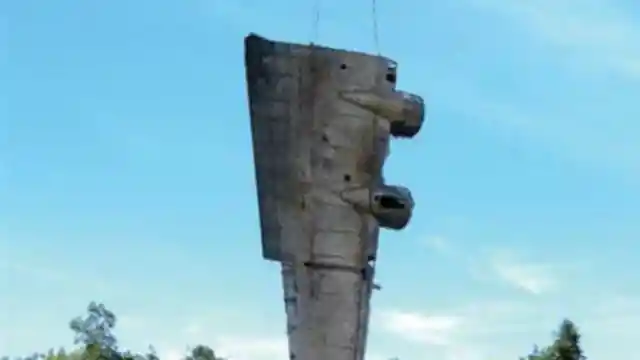
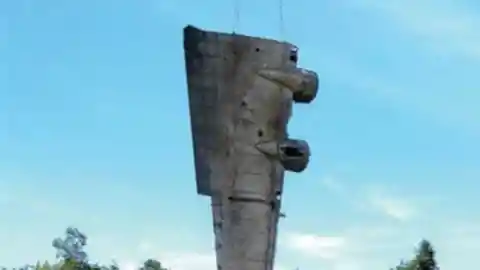
This left the chief’s son unable to stop the bomber's removal, and he could only stand by and watch as it was lifted away.
Cargo Cults
Today there are still many locals in the rural Papua New Guinea area who are upset that the plane was removed.


The plane attracted tourists from far-off places, and some local cultures even formed spiritual beliefs surrounding the plane. Such a concept is generally regarded as a form of “cargo cult.”
What Are The Cargo Cults?
A cargo cult is a system of beliefs. They are generally formed in highly underdeveloped societies. Its members hold superstitious beliefs about items that fall from the sky from more advanced civilizations, such as technology or cargo.
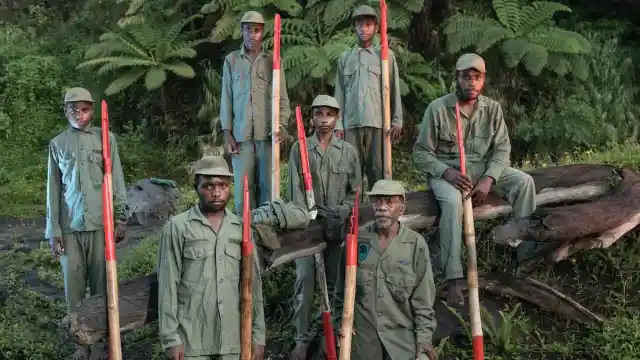
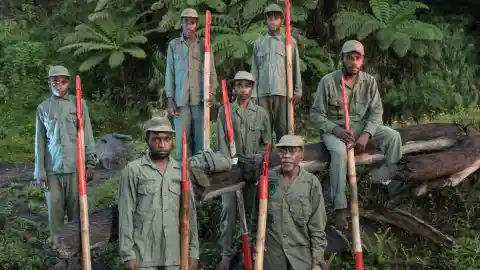
To this day, there are still many cargo cults in Papua New Guinea.
Pearl Harbor
The very first showing of the B-17 Flying Fortress after it had been removed from the swamp in Papua New Guinea was a viewing in Long Beach, California.
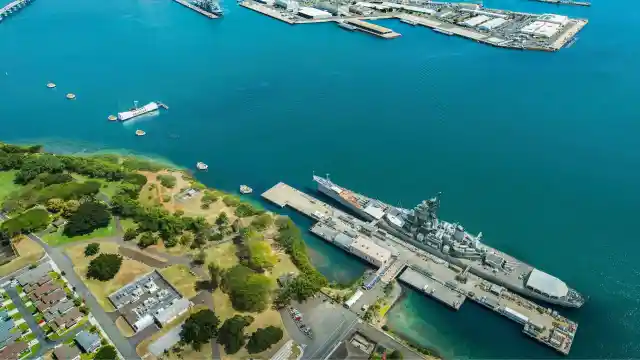
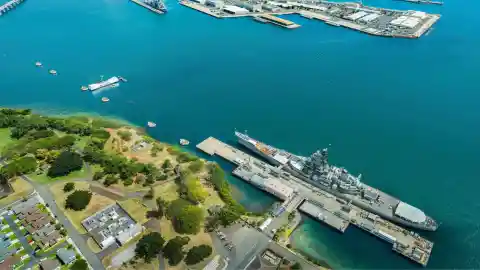
Surprisingly, many of the people in attendance were friends and family of the original crew of the bomber. It was almost as if it was brought back to life for a moment. But it still had a long way to go
A New Home
Everyone in attendance was thrilled to see that the long-lost plane had finally been returned to the United States. The bomber remains as a memorial of a horrific war that claimed millions of lives.
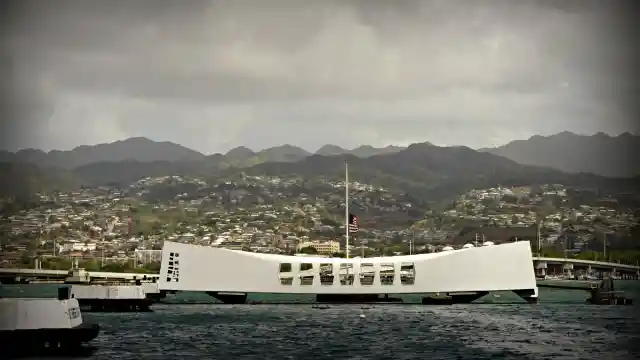
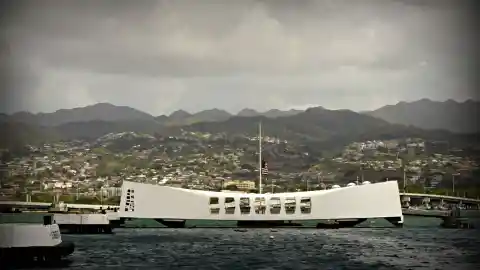
Starting in 2013, the B-17 Flying Fortress has been on display at the Pacific Aviation Museum at Pearl Harbor.
A Full Restoration
Now that the plane has been returned and is safely stored in a museum in Hawaii, the owners of the B-17 bomber plan on fully restoring the plane to its former glory.
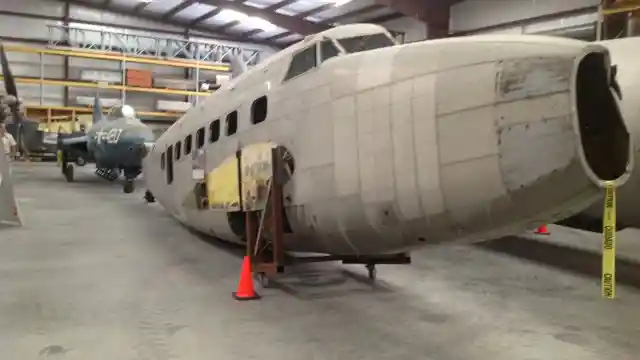
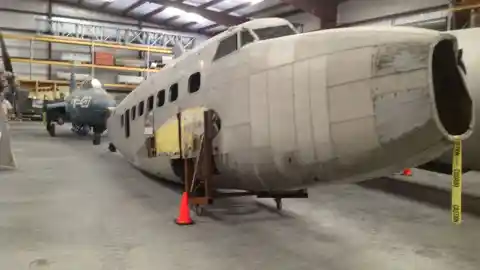
However, that’s a task that won’t be an easy undertaking. The cost of restoring the plane was going to be high.
High Costs
It’s said that it could cost $5 million or more to restore the World War II B-17 bomber. Which was a modest price for restoring a relic of this sort. However, did their plans ever come to fruition?
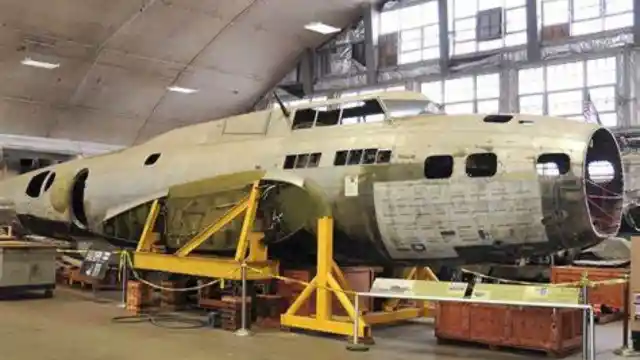
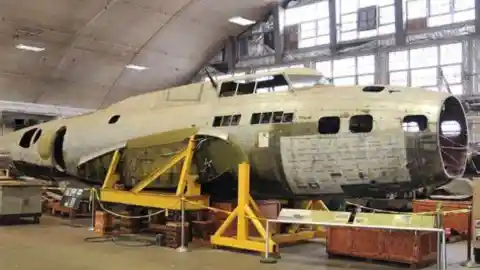
Was the Swamp Ghost actually restored? And where did it end up?
In order to protect the privacy of those depicted, some names, locations, and identifying characteristics have been changed and are products of the author's imagination. Any resemblances to actual events, places, or persons, living or dead, are entirely coincidental.